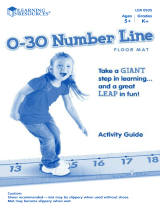
Activity 4 • Algebra I with the Casio fx-9750GII
Fun With Functions Activity
Functions help establish various types of numeric patterns, based upon whether
those functions are linear, quadratic, cubic, etc. Building a strong foundation in
Algebra includes a comprehensive study of linear functions. Functions are a rule
used to calculate values. Functions are written using a specific notation called
function notation. Each function has an independent and a dependent variable. The
independent variable is the value you get to choose or control. The dependent
variable is the value created when the independent variable is plugged into the
function. Another name for the independent variable is the “input” and for the
dependent variable is the “output”. We will define a series of coordinate points as a
relation.
In this activity, we will explore how to assign a single value to a variable and
evaluate a given function. We will also explore how to input a function and
generate a table of values as well as enter points in a data set and determine the
function.
Functions can be expressed in these different forms:
1. The Slope-Intercept Form of a Line is defined as y = mx + b; where m
represents the slope of the line, b represents the y-intercept, x represents the
independent variable and y represents the dependent variable.
2. The Standard Form of a Line is defined as Ax + By = C where A, B, and C
are integers and x represents the independent variable while y represents the
dependent variable.
3. f(x) is often described as function notation. In this example, where
f(x) = 5x – 3, x represents the independent variable and f(x) is synonymous
with y, representing the dependent variable.
Remember when graphing a function, it must pass the Vertical Line Test. A function
is defined as a relation where for every one x-value, there is one and only one y-
value. When looking at the graph, if any two points appear directly above each
other, the graph fails the vertical line test and thus, the relation is not a function.





















